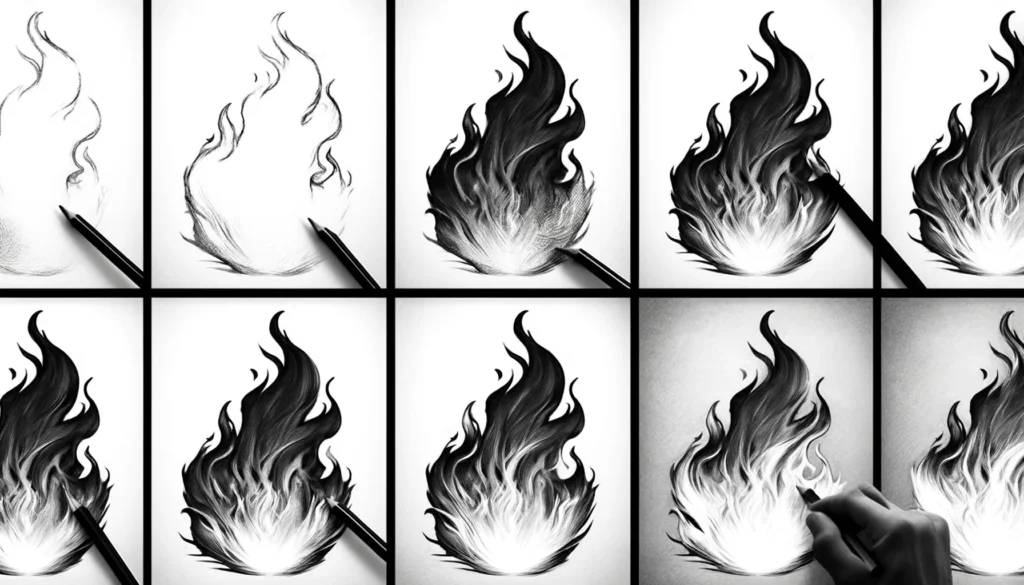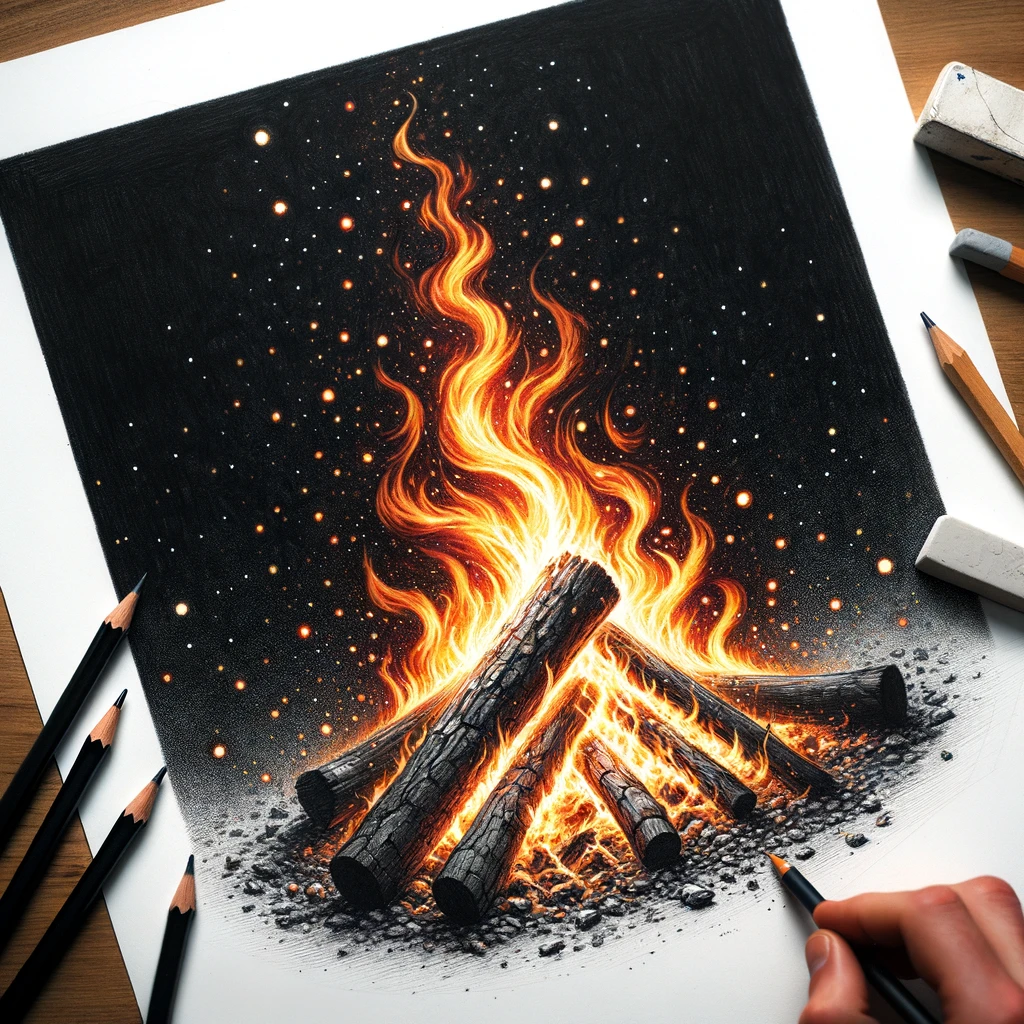How to Draw Fire : A Step-by-Step Guide to Ignite Your Art
Drawing fire can be hard and fun as it is the most exciting object with an ephemeral and dynamic nature. Now, let’s try to make sense of this convoluted step-by-step guide on how to attempt to capture the way one draw fire.
Step 1: Sketch the Basic Shape
To draw fire Start off by drawing the basic form of fire in a very loose manner. Consider the form to be something like that of a teardrop or a flame, only wider toward the bottom and sharper toward the top. Fire doesn’t have a uniform shape, so feel free to make the outline wavy and uneven to mimic the movement of flames.

Step 2: Add Internal Shapes for Flames
Draw a number of curved lines inside the major outline, seemingly starting from the base and issuing outwards in a sharp curve towards the top. This will be the flames within the major body of fire. Remember that the flames are fluid and irregular, so shape and form.
REED : How To Use a Fire Extinguisher: The must have Life saving skill
CHECK: BEST FIRE EXTINGUISHERS
Step 3: Detailing and Texturing of Flames
Add more details of your flame by putting a few smaller shapes of flames within the larger shapes—these can be even more curved and varied. Think of the movement of fire and flickering and put the movements in with your internal flame shapes. And accurately draw fire flames.
Step 4: Color Grading (If Using Color)
To begin with, there will be lighter tinges at the base of the flames, like yellows and light oranges. It shades up to the darker tinges, which would include deep oranges, reds, and even into blues towards the tip of the flame. This simulates the change in temperature and intensity, respectively, as experienced with fire. Make sure to smoothly color these together if you want a more realistic fire. Your choice: colored pencils, markers, watercolor paints, or whatever you want.



Step 5: Adding Highlights and Shadows
You can also shade and highlight the fire to make it look three-dimensional. The most bright colors will be at the closest point to the bottom and in the central area, from which your flames will be rising. You can use white or light yellow for the highlights. Add shadows at the tips of the flames and around the base to create contrast.
Step 6: Background and Final Touches
At the final step to draw fire take into consideration the environment where your fire is taking place. The darker background will let your flames seem stronger. One can also add sparks or embers coming out of the top of the flames to give it the extra touch of realism. Use an eraser to clean up any unnecessary lines from your initial sketches and to add more highlights if needed.

